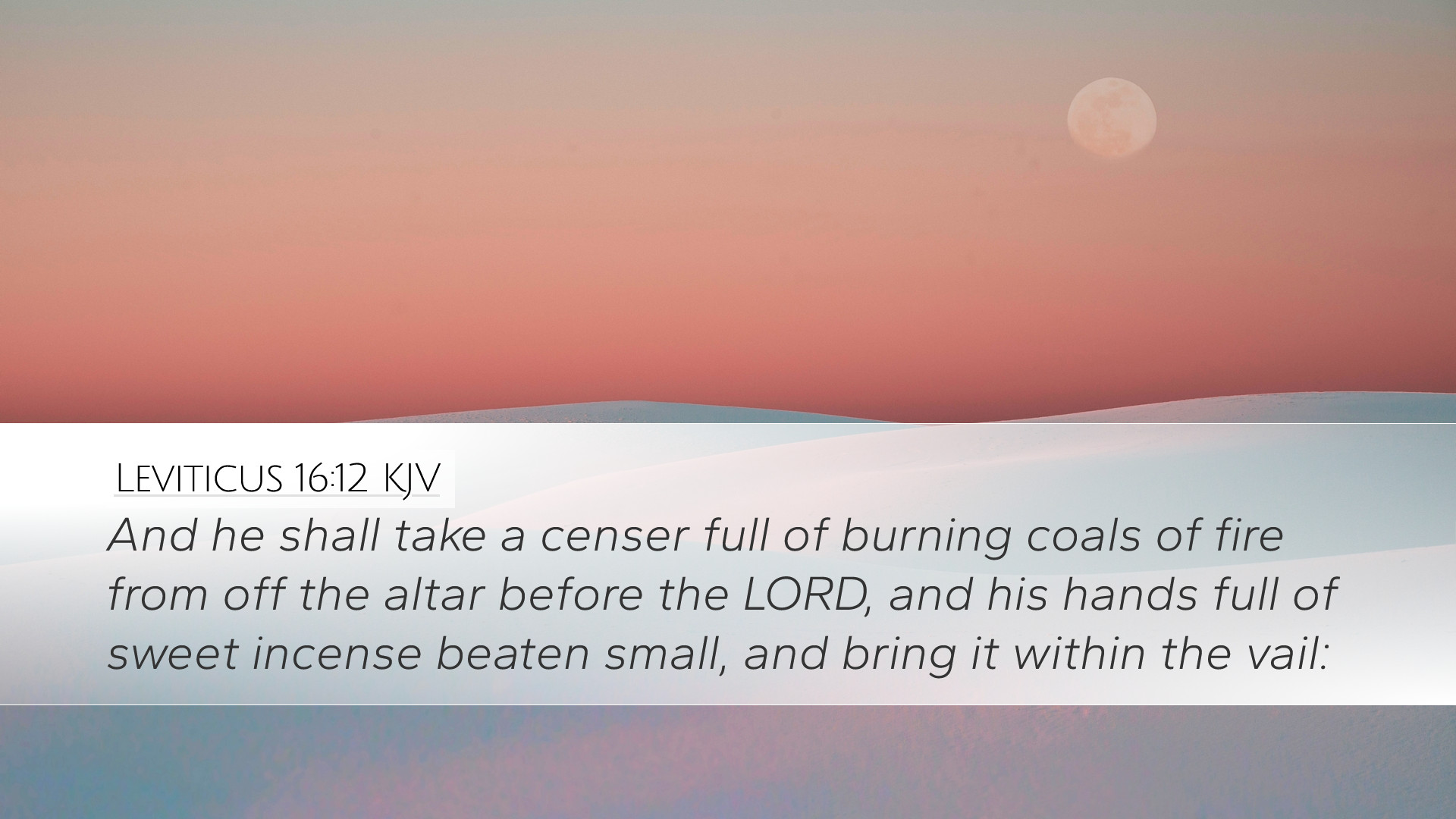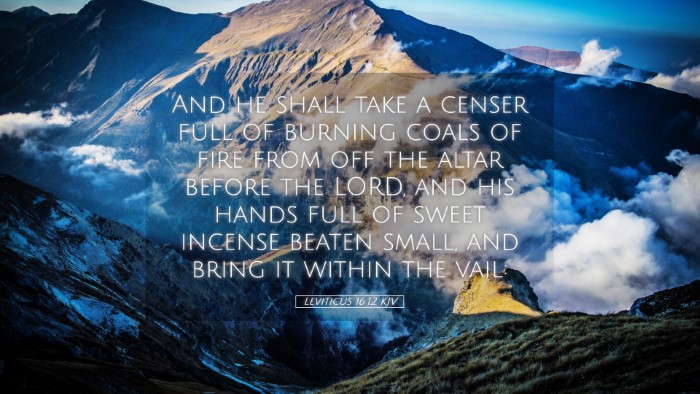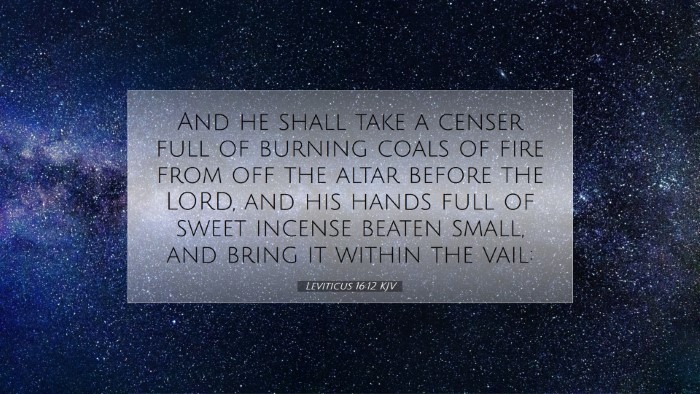Commentary on Leviticus 16:12
Verse Text: "And he shall take a censer full of burning coals of fire from the altar before the LORD, and his hands full of sweet incense beaten small, and bring it within the vail:" (Leviticus 16:12, KJV)
Introduction to Leviticus 16
Leviticus 16 describes the Day of Atonement (Yom Kippur), a significant day in the Jewish calendar established for the atonement of the sins of the people. This chapter delineates the procedures to be followed by the high priest, emphasizing the gravity and sanctity of approaching God.
Verse 12 specifically highlights the actions of the high priest as he prepares to enter the Holy of Holies, underscoring the seriousness of this sacred duty.
Insights from Public Domain Commentaries
Matthew Henry's Commentary
Matthew Henry elucidates that the censer signifies the need for purification before engaging in sacred service. The act of taking fire from the altar symbolizes the necessity of holiness in worship: only fire that has been consecrated—originating from the altar—can be used when approaching God.
Henry comments on the "sweet incense beaten small," indicating that the preparation reflects the meticulousness required in worship. He notes that such offerings must be pure and pleasing to God, expressing the importance of the heart's condition in approaching the divine.
Albert Barnes' Notes on the Bible
Albert Barnes focuses on the symbolic dimensions of the actions described in verse 12. The censer, filled with burning coals, represents the prayers of the people ascending to God, while the incense signifies the sweetness of these prayers. Barnes emphasizes that the incense must be "beaten small," symbolizing the breaking down of pride and self-sufficiency, thus allowing for true communion with God.
Furthermore, Barnes highlights the significance of entering "within the vail," which serves as a transition from the mundane to the holy, indicating that only through the sanctification of Christ can believers enter the presence of God today.
Adam Clarke's Commentary
Adam Clarke elaborates on the technical aspects of the censer and the incense. He mentions that the use of "burning coals of fire" from the altar indicates that the offerings and prayers must be ignited by God’s holiness rather than human efforts. Clarke asserts that the act of bringing the incense before the Lord was a crucial step in the high priest's mediation for the people.
In Clarke's view, this moment illustrates the depth of interaction between heaven and earth; the priest's actions are representations of the larger spiritual reality where believers must approach God with reverence, recognizing the importance of divine intercession.
Theological Implications
This passage captures a rich tapestry of theological significance that transcends its historical context. The ritual described in Leviticus 16:12 reveals profound truths about atonement, intercession, and the holiness of God.
- Atonement: This verse is integral to the narrative of atonement, demonstrating the lengths to which God provides for reconciliation with His people.
- Intercessory Role: The high priest's actions prefigure Christ's ultimate role as our intercessor, emphasizing the necessity of a mediator between God and humanity.
- Holiness of God: The specificity of the rituals illustrates God's holiness, underscoring that access to Him is contingent upon His prescribed means of approaching Him.
Application for Contemporary Believers
As contemporary believers engage with this passage, it calls for introspection regarding their approach to God. The preparation, humility, and sacredness mandated in Leviticus can inform modern worship practices.
- Spiritual Preparation: Just as the high priest prepared himself with holy elements, believers today are encouraged to engage in spiritual preparation before entering into worship—whether individually or corporately.
- The Role of Prayer: The significance of prayers represented by incense fuels the understanding of prayer as an essential practice, worthy of diligence and reverence.
- Recognition of Christ: Understanding the foreshadowing of Christ can enliven a believer’s faith, leading them to deeper appreciation of His mediatorial work on their behalf.
Conclusion
Leviticus 16:12 is not merely a historical account of ancient worship practices; it holds timeless truths for believers today. By examining the insights from Matthew Henry, Albert Barnes, and Adam Clarke, one gains a deeper understanding of the nature of sacrifice, the seriousness of approaching God, and the foreshadows of Christ's mediatorship.
This verse challenges us to recognize the sacredness of worship and the privilege we have to approach God, drawing from His holiness and mercy.


